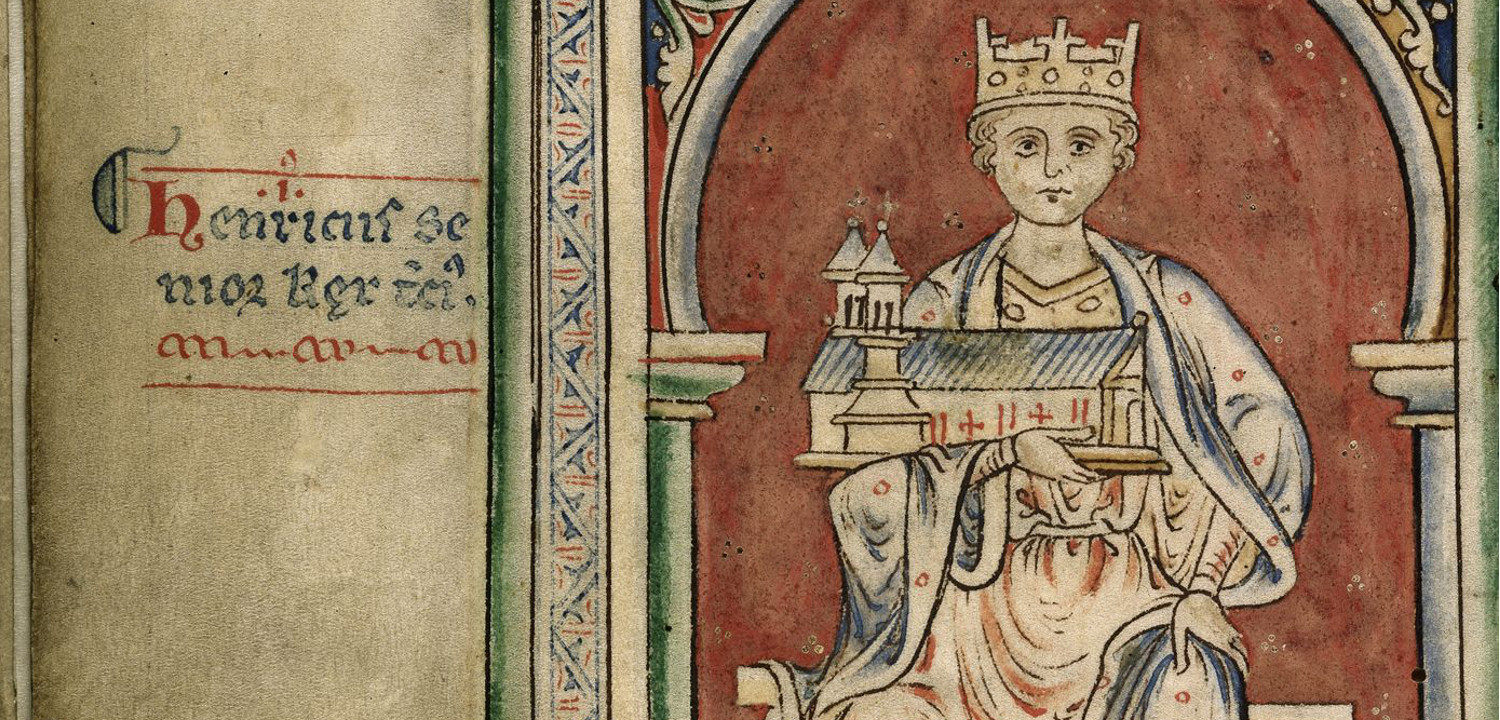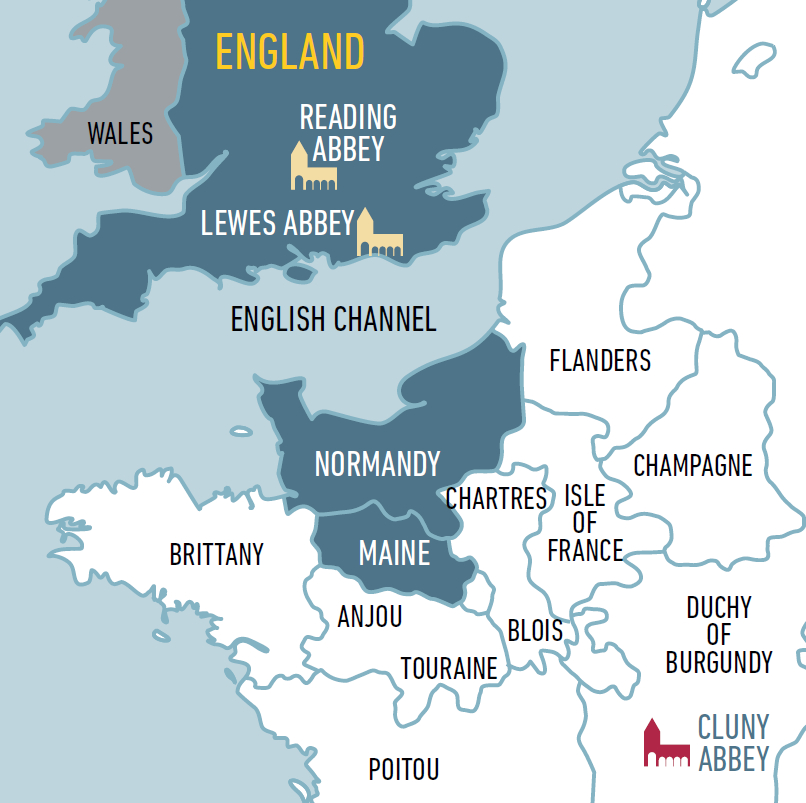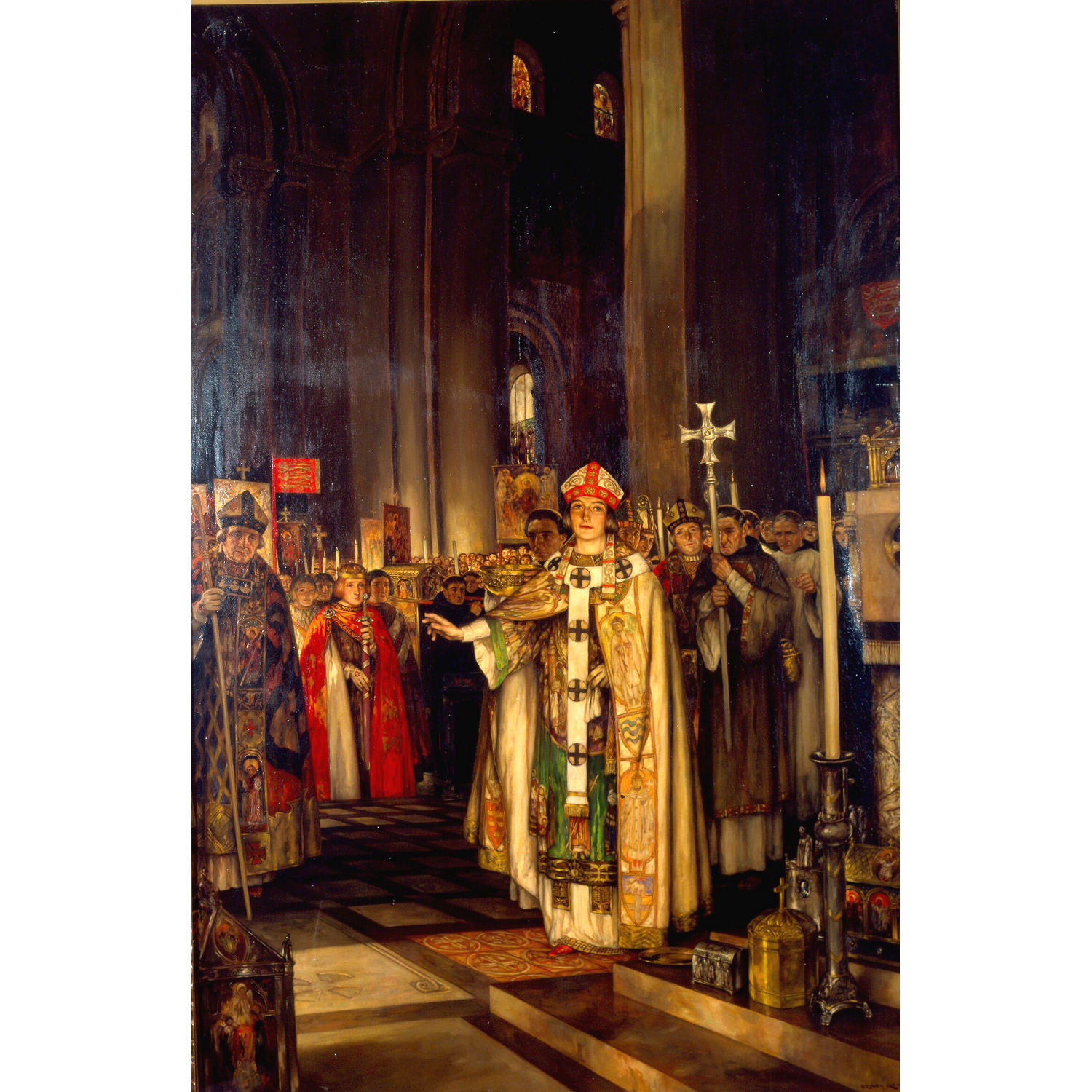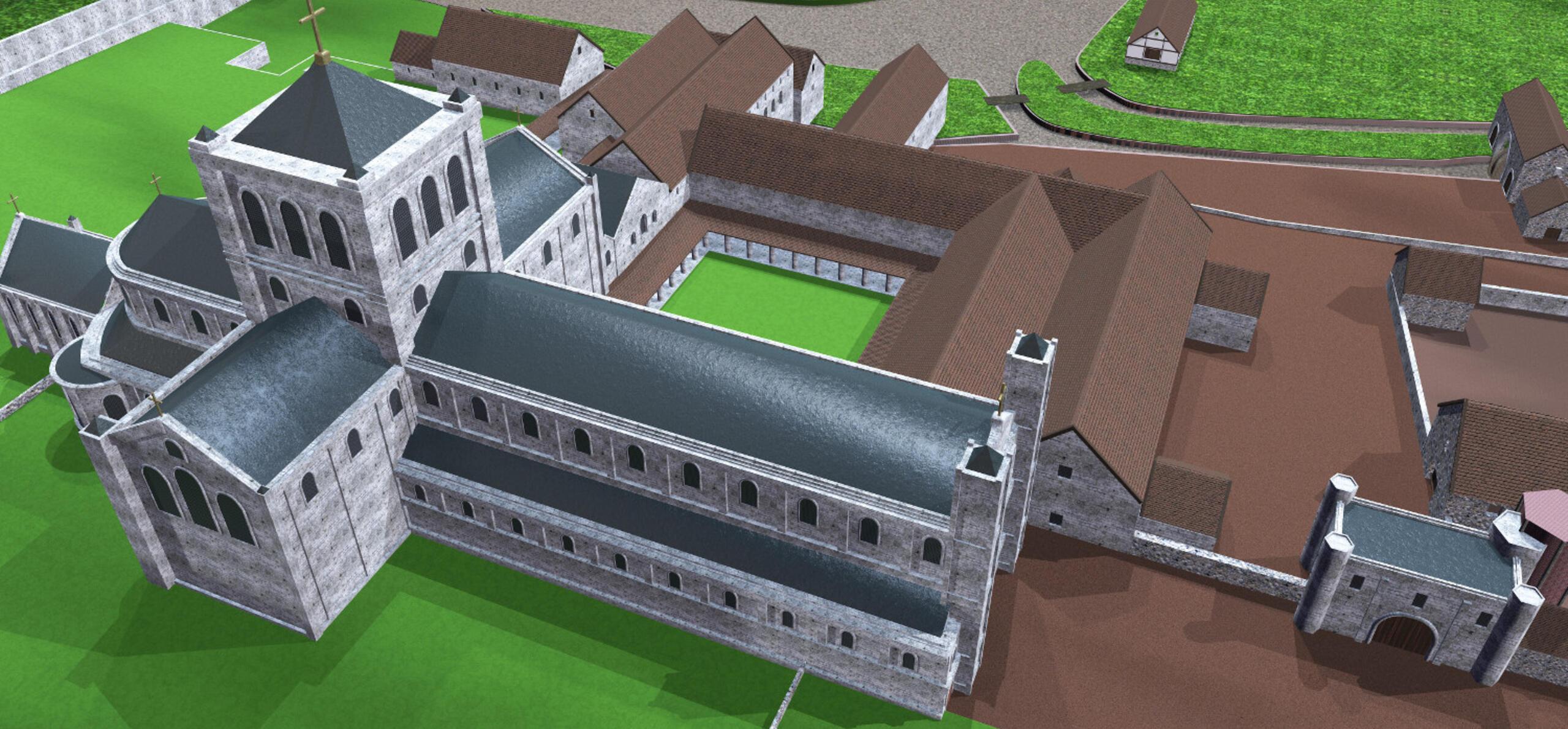Though only a little of the abbey church remains it was once one of the most important religious centres in England. No expense was spared in building the church and if it still stood today it would be the fourth-longest church in England, after the cathedrals of Winchester, London, and the abbey church at Bury St Edmunds.
Digging Deeper - Foundation of the Abbey
King Henry I began building Reading Abbey in 1121. Historians suggest many reasons why Henry founded this new religious community:
- He had led a violent and turbulent life, and this was his way of trying to make peace with himself and with God.
- He was shaken by the death of his only legitimate son and heir, William, who drowned in a shipwreck.
- He wanted to create a place of burial for himself and his family.
- He wanted to put his name to a large and impressive building, so his subjects would see how rich and powerful he was.
- He wanted monks to pray for his soul after he was dead.
- He wanted to be remembered by future generations.

Henry I depicted as the founder of Reading Abbey © British Library
Reading Abbey was set up with the help of monks from Cluny Abbey in France. Many other members of Henry’s family had made gifts to Cluny or founded Cluniac monasteries so this was a natural choice for him.
Cluny was the most important abbey in Europe at this time, and had dependent priories* in France, Spain and Italy, and at Lewes in England. The Cluniacs used the power of beautiful music and lavishly decorated buildings to intensify their religious experience.
While other monasteries were supervised by the local bishop, the Cluniac priors answered only to the Abbot of Cluny. He in turn answered only to the Pope (head of the Catholic Church).
By the 1220s, Reading Abbey was seen as part of the larger Benedictine Order, founded by St. Benedict in Italy in about AD 530, with no strong links to Cluny.
*Priory – a religious house, less important than an abbey, run by a prior

Digging Deeper - Building the Abbey
To build such an enormous church and all the other abbey buildings would take a small army of builders and a huge supply of building materials.
Flint was used to build the core of the walls and stone was used for the elegant facings. What remains today is the flint core as the valuable stone was stripped after the abbey's closure. Flint was dug locally and the finest limestone was shipped from Caen in France and Taynton in Oxfordshire.
Digging Deeper - The Grand Opening
Building work was still going on when the abbey church was officially opened by the Archbishop of Canterbury, Thomas Becket, on 19 April 1164. The ceremony was attended by King Henry II (grandson of Henry I) and his noble followers.
The opening ceremony dedicated the church to the Virgin Mary and St John the Evangelist. The Archbishop processed around the church, blessing it with holy water, and the monks sang a mass and psalms.
The abbey was such a large and ornate construction that building continued for almost 200 years after the original foundation in 1121.

The consecration of the abbey church, Stephen Reid, 1920
Thomas Becket
Thomas Becket, Archbishop of Canterbury was murdered in Canterbury Cathedral in 1170, and made a saint in 1173. He quickly became one of the most popular English saints and Canterbury became the number one destination for pilgrims. The monks at Reading Abbey made sure they were not losing out on the surge in Canterbury’s popularity and quickly acquired their own relics of St Thomas.





